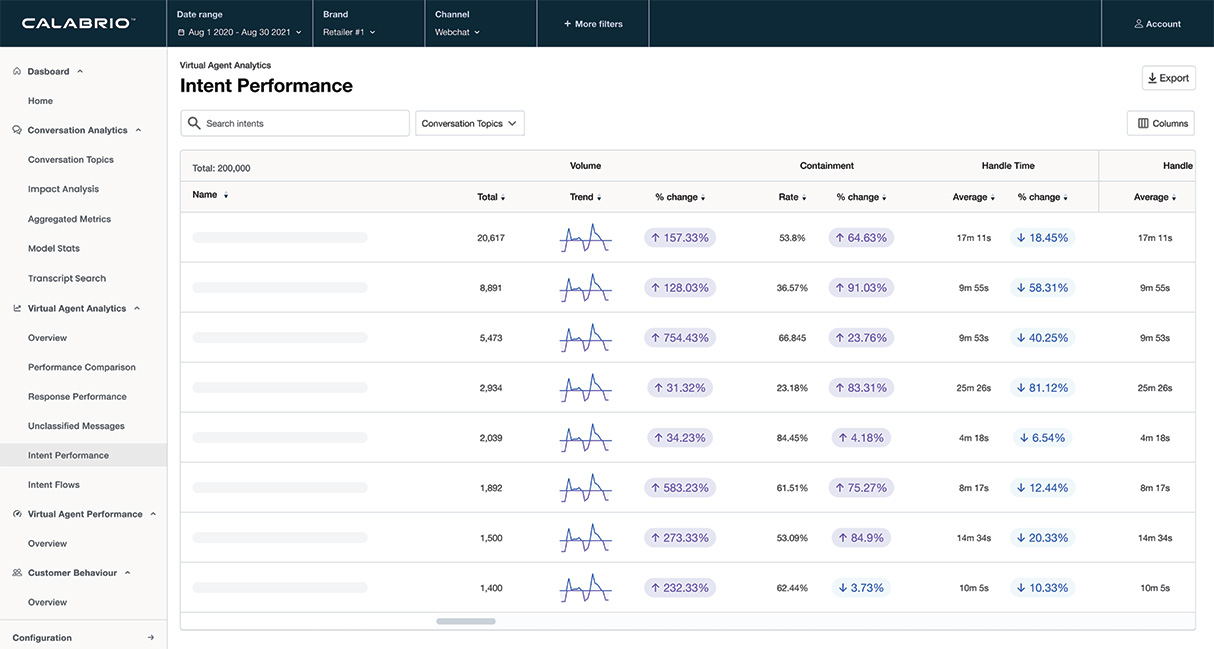Customer Experience Nightmares: Get Ahead of Issues with Topic Modeling

Companies often take a reactive approach to important decisions about their customers because “hindsight is always 20/20.” The problem with hindsight is that it doesn’t always help brands fix issues until it’s too late.
To help stay ahead of problems, many companies are employing speech analytics in their contact centers to look at their customer conversation data before taking action. But, in the midst of massive amounts of information, many verbal cues can sometimes get lost or go unnoticed, preventing companies from seeing the bigger picture. What if brands could determine even seemingly unpredictable trends before customers ever specifically stated a problem?
With topic modeling, it’s possible, and that’s just one of the things that we’re working on here at Calabrio.
How Topic Modeling Works
With speech analytics, conversations with customers are recorded, the speech is translated to text, and brands receive alerts when pre-determined keywords or phrase are spoken. From there, they can make appropriate changes to a product, service, or marketing campaign. However, it’s impossible to pre-classify every keyword or every phrase that might be useful. This means there will always be gaps, which can make it difficult to identify some issues until it’s too late.
For example, several customers of a restaurant chain may call to let the restaurant know that they aren’t feeling well. They may say certain words like “crampy,” but until they start saying specific words and phrases like “nausea” or “food poisoning,” the company may already be too far behind to contain the issue.
Topic modeling uses machine learning and natural language processing to find abstract topics in large pools of data so brands can identify the larger trends in the midst of conversations, including topics that aren’t even on the radar.
In topic modeling, algorithms analyze transcribed calls, emails, chats and other text based communications data, find related words, and extract themes. These statistical models determine the connections between those themes and how they change over time. As the data set expands, the algorithms grow, change, and learn to better process information, so the themes become more accurate.
These models allow brands to categorize conversational data by concept rather than by keywords or phrases, so they can take action sooner, rather than looking in the rearview mirror.
In the restaurant chain example, the food poisoning outbreak is already in process by the time customers start calling in. However, if the company uses topic modeling to identify food-related subjects, the algorithms will notice a change in patterns when things like “feeling nauseous,” “not feeling well,” or “not sure what I ate” begin to appear in relation to food.
Once this happens, they can use that information to find other themes, like isolating the particular item that was consumed that ultimately caused the illness. The restaurant can then proactively stop serving that item and use channels like loyalty program information to reach out to diners who may have eaten that dish on that specific evening and offer a voucher or incentive for the customer to dine there again. These actions can be taken even before many patrons feel the full effect of the illness.
To build successful customer engagement and retention strategies, brands must continually look for ways to improve how they listen to customers. Topic modeling allows brands to see the bigger picture using some of the subtler verbal cues that happen during customer conversations, and it gives contact centers the opportunity to gain deeper insights faster by identifying topics and trends much more quickly. With this critical information, companies can enact containment strategies to ensure issues don’t spread, be more proactive with customers when a problem has been recognized, and improve the overall customer experience.
At Calabrio, we believe the modern contact center is constantly evolving and changing to meet the needs of customers. Topic modeling is just one of the things that we’re working on to ensure that contact centers can stay ahead of issues, trends, and customer wants and needs.
Learn more about the challenges contact centers face and the technology that is empowering them in our Definitive Guide to the Modern Contact Center.









